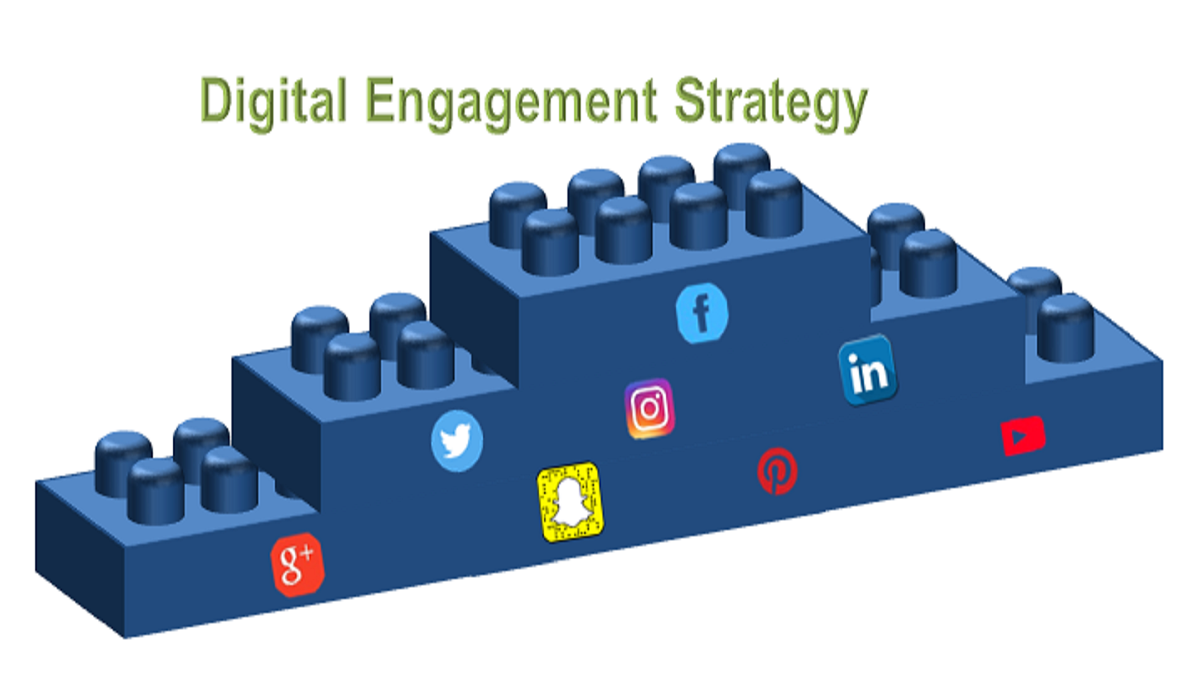I was recently asked a question innumerable times when I posted job openings for gorg.co.in. What surprised people is that we did not mention the conventional Social Media Marketing buzz words – we opened up positions for Facebook, Instagram, LinkedIn etc. differently. I have also noticed that Brands post the same content on all their Social Media channels. Is it efficient and does this strategy work? I try to unravel the mysteries of social media through this article.
Have you ever observed the variability in your behavior across various platforms like Facebook, Instagram, Youtube, Pinterest, Snapchat, Google+, Twitter, LinkedIn? Probably No. However, it does exist! The lack of observation in this regard can be attributed to the misleading-misnomer “Social Media.” We interact differently with different social platforms. The direct commercial implication of this behavior is borne by the advertisers. Our interaction with an advertisement depends on the platform used to view the advertisement in question.
In 2018, Voorveld, Noort, Muntiga & Bronner from the University of Amsterdam, The Netherlands, studied these interactions and published a paper titled “Engagement with Social Media and Social Media Advertising: The differentiating Role of Platform Type” in the Journal of Advertising. The paper forms the basis for the rest of this article.
Digital engagement is considered as the key to brand success these days. Success and extent of engagement are attributed to creativity in the advertisement. Consequently, academic research has also focused on the content. This article shifts the focus to context rather than content. Similar studies have been done concerning differences in advertisement perception on television, radio, and magazines, but no such study existed in the context of social media. The paper studied the effect of consumer engagement with social media on the relationship between social media engagement and social media advertisements.
- Engagement: A multilevel, multidimensional construct that emerges from the thoughts and feelings about one or more rich experiences involved in reaching a personal goal.
- Context: The Environment of the ad provided by the vehicle carrying it: the medium context
- Experiences: The emotional, intuitive experiences or perceptions that people undergo when using a particular medium at a particular moment. These experiences can be multidimensional, such as satisfying the need to find useful information.
- Media Experience: The specific experiences during a concrete social media consumption moment
- Social Media Engagement: Sum of the specific social media experiences
- Social Media Advertising Engagement: Sum of experiences that people obtain while being confronted with social media advertising on any platform
Content-specific research focuses on quantitative aspects of engagement, such as the number of likes, shares, and views. Here the focus on context shifts the discussion towards the qualitative aspects.
- Engagement is defined as the type of environment that the social media platform provides to the consumer.
This definition directly affects the way the consumer experiences the advertisements embedded in the platform.
SOCIAL MEDIA CHARACTERISTICS
Engagement across platforms is unique as they serve different functions. The paper sampled data from eight social media platforms. Facebook is a social network, snapchat allows instant photo messaging, Instagram allows photo sharing, twitter for micro-blogging, LinkedIn for professional networking, Google+ for interest-based networking, Pinterest for ideas-sharing and YouTube for video sharing. Zhu and Chen differentiated social media based on profile and content, as shown in the figure below.

Another important classification of social media platforms was developed by Kietzmann et al. (2011) who defined these platforms based on the seven building blocks:
- Identity: the extent to which users reveal their identity in a social media setting
- Conversations: the extent to which users communicate with other users
- Sharing: the extent to which users exchange, distribute and receive content
- Presence: the extent to which user can know if other users are accessible
- Relationships: the extent to which users can be related to other users
- Reputation: the extent to which the user can identify the standing of others, including themselves
- Groups: the extent to which users can form communities and sub-communities
ENGAGEMENT EXPERIENCE FRAMEWORK
The Authors employed the Engagement Experience Framework to build on the methodology and to develop the Hypothesis. The most interesting part of the methodology is the single-source approach, wherein experiences of the same engagement activity were asked to be reported on multiple platforms to enable direct comparisons and external validity.

HYPOTHESIS
Any social media platform may have one or more of the characteristics mentioned above. This implication directly affects the type of advertisements posted on these platforms. While a photo-based advertisement is suited for Instagram or Snapchat, Twitter will support a short text, and YouTube will support a short video.
This conclusion leads to the first two hypotheses that: social media engagement experiences differ across different platform, and social media advertisement engagement differs across different platforms.
Previous research suggests that response to an advertisement featured on TV, radio or magazine, depends upon the extent of engagement of the consumers. The more engaged the customer, the better is the response to the embedded advertisement. Extrapolating the finding leads to the third hypothesis that engagement with a social media platform is positively related to social media advertising evaluations, and this relationship is contingent upon the social media platform.
It is necessary to check whether the advertisement effectiveness is directly affected by social media advertising engagement rather than social media engagement. The notion of priming, mood congruency-accessibility hypothesis, and congruency principle suggest that social media engagement affects the social media advertising engagement.
The advertisements are better perceived if they are in line with the type of platform. This point will result in a more positive response to the advertisement. Thus, there are two parts to the fourth hypothesis, first is that engagement with the platform is related to engagement with advertisement and second being that this engagement directly affects the advertisement evaluation.
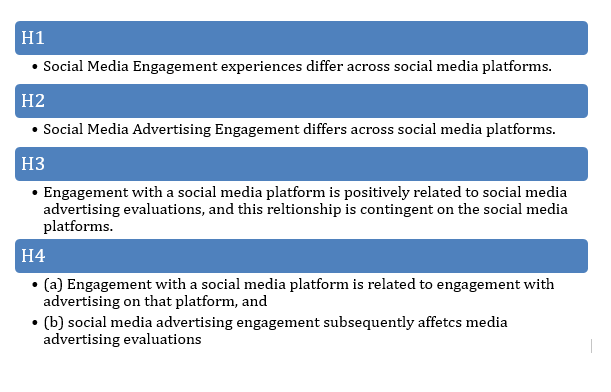
The hypothesis were tested by a single-source approach by focusing on engagement experience of the social media consumer at a specific moment where they were consuming a social media advertisement. Respondents were asked various structured questions. The illustration of the methodology is shown in the figure below which has been taken from the paper directly.

I will provide you with the implications and results of this study using the example of Starbucks. In our research and observation, Starbucks uses a platform specific strategy for its various promotions and resonates perfectly with the findings of the paper.

Facebook: Their promotions on Facebook are photographic or short videos that are mostly accompanied by a few descriptive lines, which concentrate more on identification of the brand and social interaction to capture mind share of the consumer. Such a message is focused on winning consumers’ attention without losing their acceptance of the brand narrative.

Instagram: Their Instagram posts are more flashy with a greater aesthetic value. These are meant for more relaxed and cheerful conversations with the consumers and to appeal their senses.
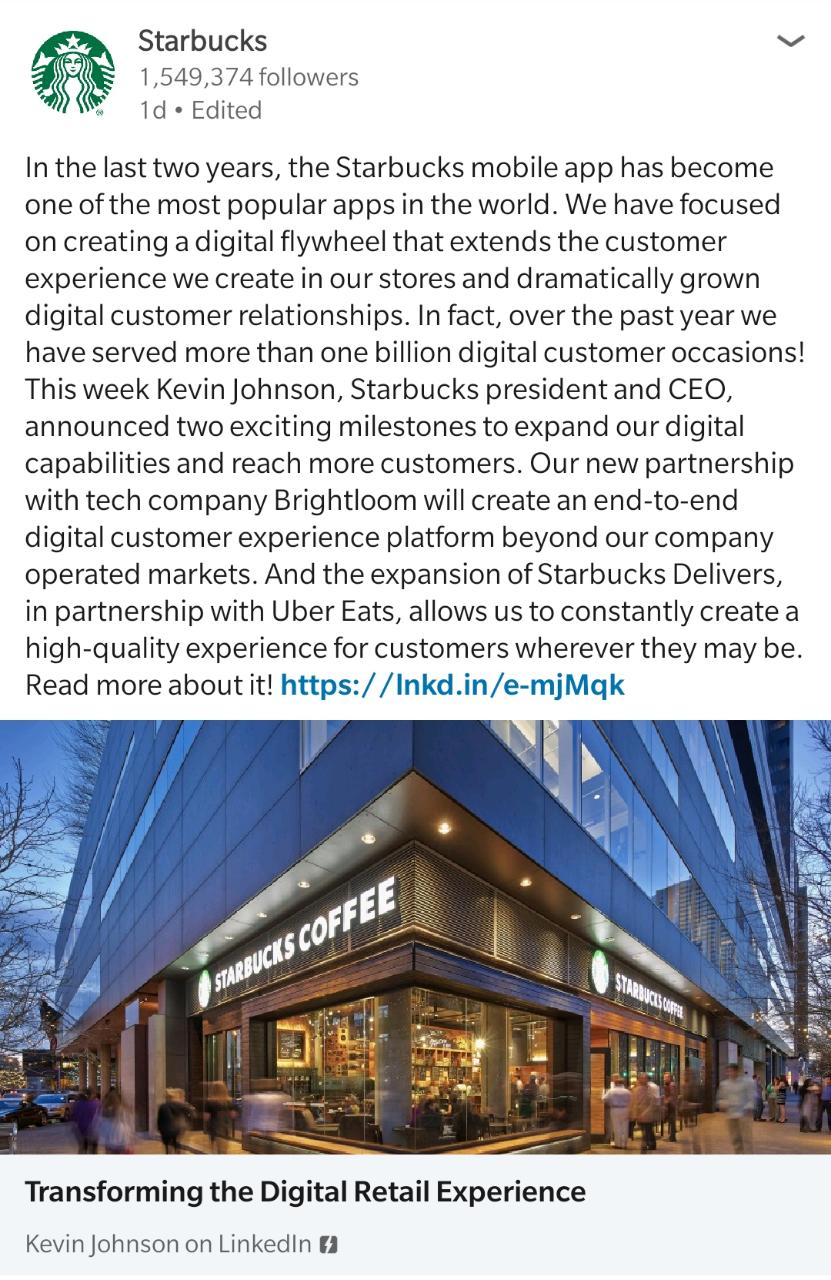
LinkedIn: As one would expect, LinkedIn is for professional and more serious conversations or promotions. Starbucks uses exactly this theme. Their messaging on LinkedIn is mostly related to corporate culture and its strengths for Starbucks as a global, inclusive and growing organization.
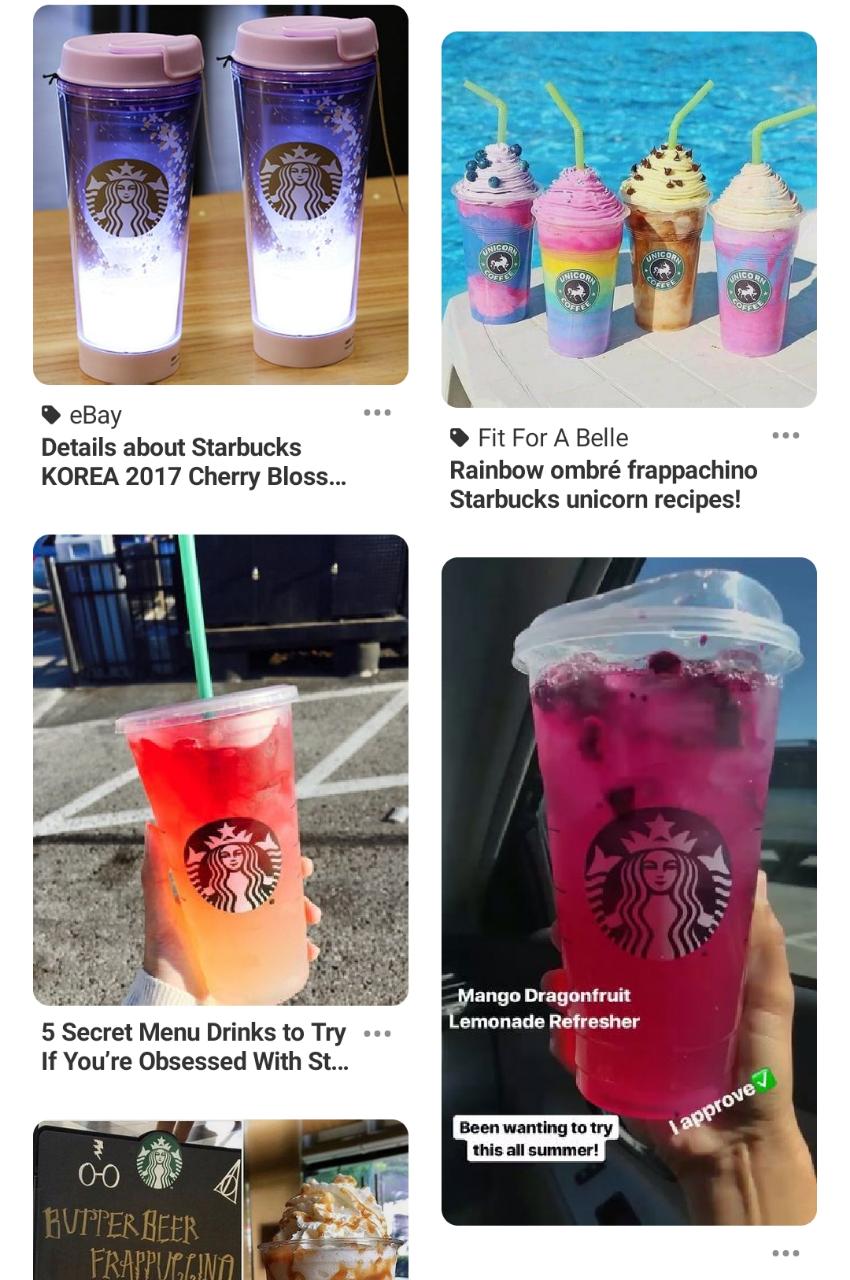
Pinterest: These posts are about innovation and ideas to stimulate users and provide topicality. Here the content is more driven towards user generated pictures and content, which highlights the practical use aspect of social media.
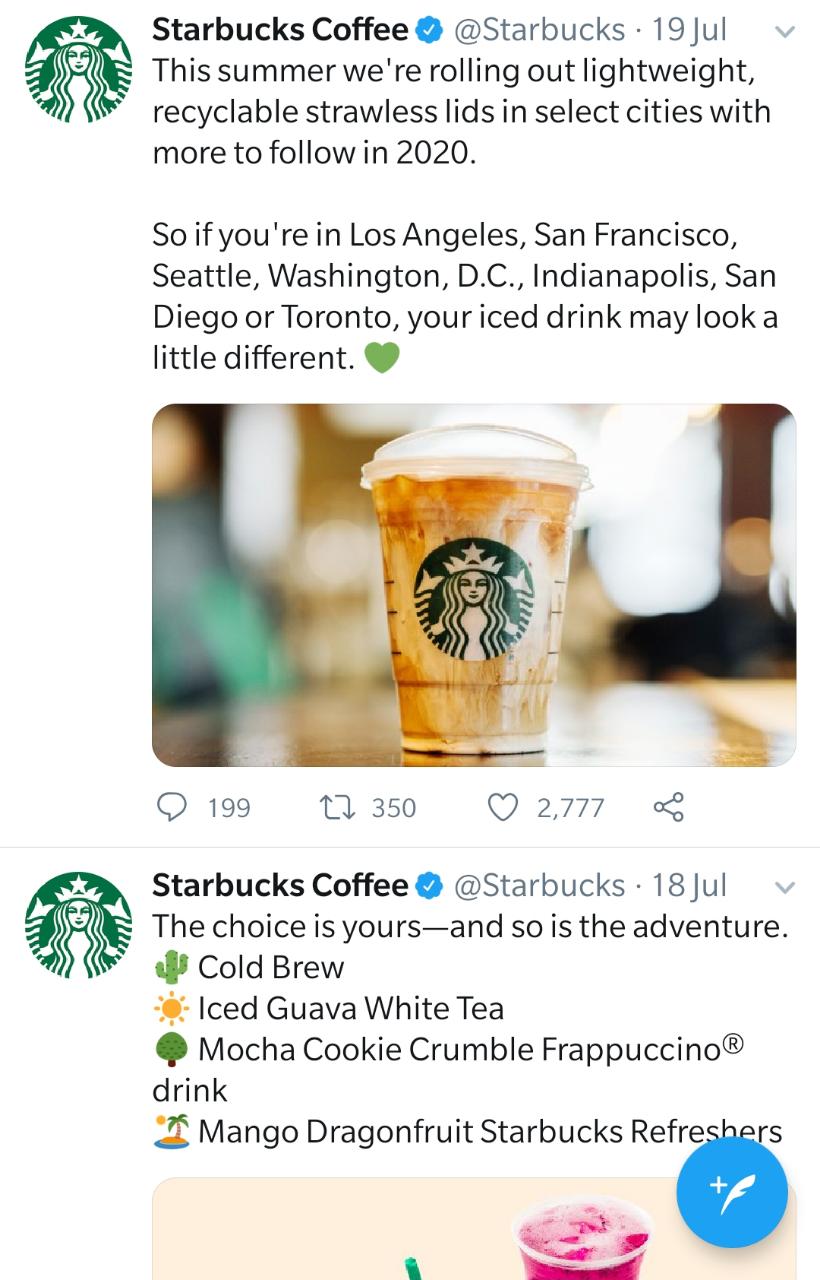
Twitter: Twitter users are mostly not appreciative of advertising, therefore, Starbucks uses this medium to highlight announcements and milestones achieved by Starbucks validating the topicality aspect of Twitter.
CONCLUSION
The lack of a dimension of Information in the study suggests that Information is irrelevant, but the authors clarify that such is not the case. They argue that it is less prominent a dimension but equally important since exchanging information is a means to an end rather than a goal with social media taking up a central role in our lives.
Information in Social Media Engagement and Advertising context has a presence under topicality (staying up to date eg: on Facebook, Instagram, Snapchat), under practical use (seeking out useful tips and ideas eg: Pinterest, Twitter, LinkedIn), and under-stimulation (trend-related information eg: Twitter, Instagram, LinkedIn).
Therefore, next time one is developing a marketing or advertising strategy they need to be mindful of the fact that each media will offer different strengths and weaknesses, and therefore given that context, content need to be placed. This is just the part of the secret recipe to most successful promotions!
So should you hire a single person for all your social media channel or hire a different talent for each one, what do you think?
This article was originally written for YourStory Media dated 6th May 2020.


